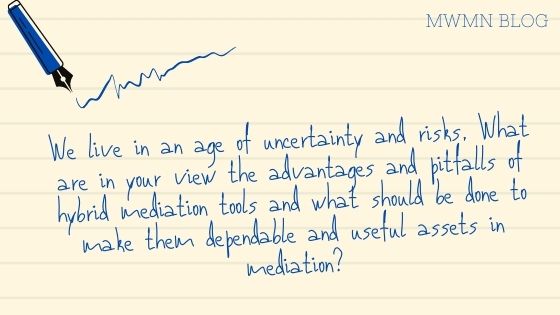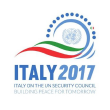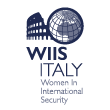‘’I did not have an equal opportunity before to get my voice heard’’ was a remark made by a women’s rights activist who participated in an online consultation coordinated by NOREF. Wider inclusion provided by the integration of the available digital tools into mediation and peacebuilding efforts is self-evident. One would wonder why these tools had not been deeply integrated in the field before the travel restrictions imposed by COVID-19 and despite professional attempts by some mediation/peacebuilding pioneers. Digital tools can help keep the mediation effort ongoing despite travel restrictions, access challenges or political constraints. They could further enhance inclusion regardless of location, social barriers, travel documents or authorisation, hence reinforcing the integration of women and traditionally marginalised groups in peace efforts. However, online engagements do not automatically amount to equal inclusion. Access to the Internet, electricity and digital literacy can be exclusionary factors. Giving in to the digital hype could be costly if practitioners do not take the time to address the potential pitfalls. Trust-building and protection of confidentiality are part and parcel of peace mediation, and they are particularly challenging in virtual settings. Understanding the implications of using digital tools in each dialogue setting is key to its success, at least on the technical side, and setting the e-rules of the game is essential. There are some steps that help partly mitigate these challenges, such as selecting the appropriate digital tool(s) suitable for the purpose of the engagement. Dialogue needs to take place among the ICT industry and the peacebuilding community to produce custom-made tools useful for this setting. Providing training to build the digital capacity of the participants could foster trust among them and level the playing field. Cybersecurity concerns will remain a challenge. However, some mitigating steps could be taken including developing a legal framework that regulates data storage.
This year we have been confronted with a world that suddenly prevented us from meeting each other, traveling and engaging in dialogue in person. By this autumn most of us have become more comfortable with the technologies that can replace physical contact, while remaining acutely aware that these technical solutions are far from perfect. In the world of mediation and peacebuilding, we remember warmly the opportunities to meet partners in person or to get to know each other better by spending time together in a remote location. Now such possibilities are not available to us. But can we pinpoint what exactly are the main limitations of the current online possibilities and why we think of them as problems? And are there ways to overcome them?
Those involved in mediation and peacebuilding point out that the first obstacle is sometimes represented be a missing Internet connection or the lack of resources to acquire a phone, laptop or proper mobile connection for many partners. The security of lines may also be risky. In an online meeting what seems to weaken contact is the mere lack of non-formal interaction or limited possibility to show and see gestures. As in successful in-person meetings, inclusiveness is key, as is listening, and the feeling that when I am speaking I am being listened to. This is a simple human expectation whether online or face-to-face. Talking, listening and interaction build trust, and for mediation or dialogue a basic level of trust is indispensable for moving forward. In a meeting room one can see if the others are listening or paying attention. Sometimes sitting in a virtual room can be frustrating both for those who want to say something but are not seen, or for those who are listening but only hear the silence of cyberspace with everyone’s microphones off.
Some webinars allow working groups, where the discussion can go in-depth thank to the help of dedicated facilitation that calls participants individually to offer their views and acknowledges their contributions. In this respect, it is important to create tools for online discussion that set joint rules allowing time for interaction, listening and giving sufficient time to speak. It is clear that time and effort should be invested in this, perhaps including professional guidance on how to make online meetings inclusive, participatory and interactive, and how to establish rules of discussion. Otherwise online meetings may become waste of time to all, just as poorly planned in-person meetings may be.
Furthermore, while organisations are now saving on travel expenses, there could be investments in providing tools for online interaction. This could be in the form of equipment, programmes, applications, Internet connections and cybersecurity provisions, or helping the partners with fewer resources to get access to these. The provisions could be built in project budgets as indispensable tools for interaction. As the pandemic is not showing immediate signs of disappearing, we have to enable interaction on the global scale as this is crucial in many sectors. The current challenge also reminds us of the lack of sustainability of our pre-pandemic lifestyle where it was common to fly across continents for the weekend, and even more so this opportunity should be used to advance the technical solutions that may replace or significant curtail the need to travel in future.
The technical solutions offered so far may not be perfect, however it is all about expectations: we have been used to expecting things to be a certain way. The current world is not how we were used to seeing it and we need to find ways to adapt to the new situation. There are plenty of opportunities to find innovative solutions to continue allowing dialogue and interaction, we just need to adjust our thinking and behaviour to them.
The current circumstances related to COVID-19 have accelerated the use of – and interest in – peacetech, and have led to a virtualisation of diplomacy. This has required rethinking the design of mediation processes and finding ways to provide connectivity to stakeholders. This new hybrid modality has enabled the reach and access of more remote areas and stakeholders, including women who are already playing key roles in local peacemaking and de-escalation, making it possible to bridge their work to national peace processes. However, engaging virtually has proven unsuitable in certain contexts due to tradition and culture, like for instance with tribal or community leaders. In other cases, there may be a need for strengthening local capacities to allow for the use of virtual or technological tools. Furthermore, the difficulties of building trust with new stakeholders or between conflicting groups, or to build consensus around key national issues, are amplified in the digital space.
Hybrid mediation incorporates a wide range of tools from virtual dialogue, technology in facilitation and artificial intelligence (AI) to mention just a few. The use of AI in mediation is a nascent area and was recently trialled by the United Nations in Yemen. The UN used AI to convene up to 1,000 stakeholders digitally for consultations on key issues in the peace process. While the approach is innovative and provides important insight and a sense of greater inclusion, it also lacks human interaction and might be perceived as both impersonal and mechanical. There are also limitations with regard to reach and representation. However, although it cannot substitute for greater inclusion in the peace process it is without doubt a useful supporting tool that will be refined with time.
Hybrid models of mediation and peacebuilding have come to stay and should be embraced and further developed to better address our needs. Technological tools and AI can however only complement more traditional means of mediation. As mediators it is our responsibility to ensure that technology is used meaningfully and in a tailored manner addressing well-defined needs. Hybrid approaches in mediation and peacebuilding will then ultimately support greater inclusion and strengthen the quality and sustainability of peace processes.




